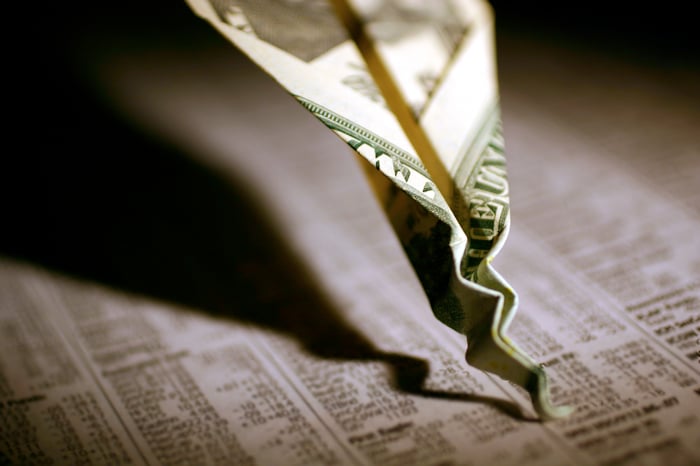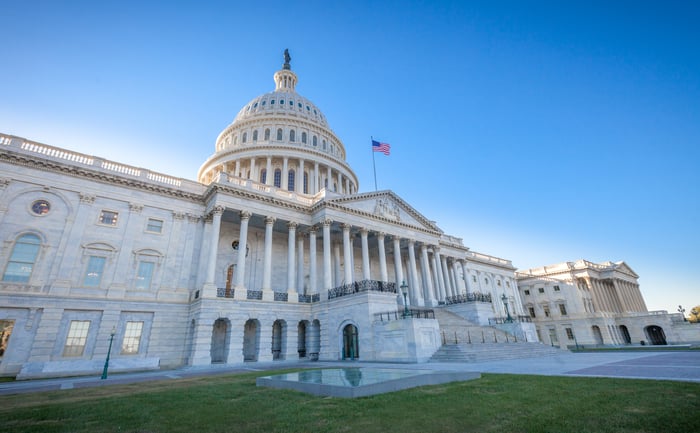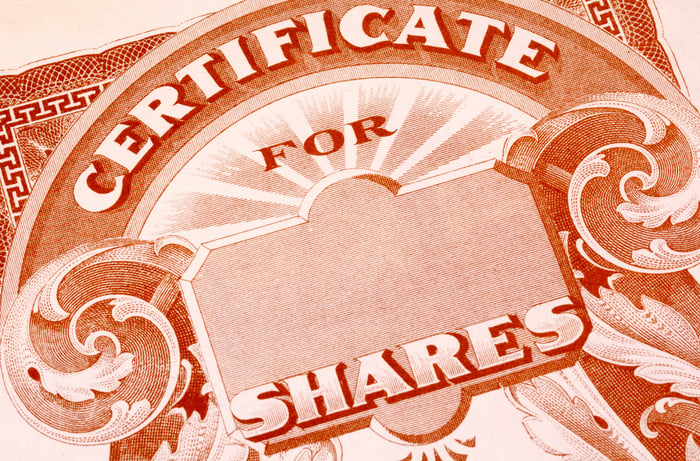In 2020, investors experienced about a decade's worth of volatility crammed into a single year. The unprecedented uncertainty surrounding the coronavirus disease 2019 (COVID-19) pandemic sent the S&P 500 (^GSPC -0.88%) screaming lower by 34% during the first quarter, only to see the index finish the year higher by a double-digit percentage.
Suffice it to say, many long-standing records were tossed by the wayside last year.
Unfortunately, a new year doesn't necessarily mean an end to the unprecedented volatility. There are 10 viable reasons the stock market could crash, once again, in 2021.

Image source: Getty Images.
1. Vaccine efficacy hype misses the mark
Though Pfizer/BioNTech and Moderna wowed the research community with respective vaccine efficacy (VE) of 95% and 94.1%, the investment community is looking forward to other drug developers reporting their COVID-19 VE results in the first quarter. This includes Johnson & Johnson (JNJ 1.49%), whose vaccine is administered in a single dose, as opposed to two doses with virtually all other COVID-19 treatments. If Johnson & Johnson's vaccine doesn't deliver exceptionally high VE, doubt about ending the pandemic in 2021 could creep in and push the market notably lower.
2. Not enough people receive a COVID-19 vaccine
Another reason the stock market could crash in 2021 is if too few people choose to get a coronavirus vaccine. Though estimates vary, Dr. Anthony Fauci has suggested that anywhere from 75% to 90% of the U.S. population would need to receive the vaccine to develop herd immunity. That's a troublingly high figure, especially when most surveys have shown that only between 50% and 70% of those questioned plan to get the vaccine. Without herd immunity, a return to "normal" may not be possible in 2021.
3. COVID-19 variants accelerate a new round of shutdowns
Less than three weeks ago, a new variant of the SARS-CoV-2 virus, which causes COVID-19, was identified in the United Kingdom. The mutability of the virus has the potential to cause serious problems. For example, differences in transmission or mortality rate could induce strict lockdowns that further ravage the economy. It's also possible that emergency use-approved and experimental vaccines may prove ineffective or less effective against new variants of the virus.
Fear of the unknown crushed the S&P 500 in March, and it could do so again in 2021.

Image source: Getty Images.
4. The Georgia Senate runoff yields a surprise
Politics might also be the market's undoing. In just two days (Jan. 5), Georgia's residents will head back to the polls to determine which two candidates should represent the Peach State in the U.S. Senate. Wall Street has been counting on a split Congress, with Republicans holding onto the Senate and Democrats controlling the House. At the moment, Republicans hold 50 Senate seats. They only need to win one of the two runoff races in Georgia to secure their Senate majority for two more years.
If, however, Democrats win both remaining seats, it would tie things up at 50-50. Votes that end in a tie in the Senate would be broken by Vice President-elect Kamara Harris (after Jan. 20). It would effectively give Democrats control of Capitol Hill, which could mean big corporate tax increases and much slower earnings growth.
5. Additional stimulus is off the table
Washington, D.C., could also disappoint Wall Street if it fails to pass additional stimulus, above and beyond the $892 billion deal President Donald Trump signed on Dec. 27. President-elect Joe Biden has been adamant that he would push for a larger stimulus deal once he's officially in office. However, Senate Majority Leader Mitch McConnell (R-Ky.) has proved less receptive to additional stimulus with each passed bill. A stalemate on Capitol Hill may not go over well with investors.
6. Loan/credit delinquencies overwhelm financial institutions
Even though the stock market and U.S. economy aren't linked at the hip, a rising tide of credit, loan, and mortgage delinquencies in 2021 could spell bad news for financial stocks.
Generally, bank stocks have done a bang-up job of apportioning capital for loan losses. The issue is that it's unclear how much stimulus will be needed by businesses and consumers to avoid defaulting on their outstanding obligations. If Capitol Hill fails to pass additional stimulus, or if stricter lockdowns are imposed by the federal government once Biden is in office, the amount of bad loans banks are forced to contend with could exceed worst-case scenarios.

Image source: Getty Images.
7. Share buybacks continue to decline
One of the more under-the-radar impacts of the coronavirus recession is that it significantly reduced corporate share buybacks. Data from market analytics firm Yardeni Research shows that annualized S&P 500 share buybacks fell to $407.2 billion in the third quarter of 2020. That's down from close to $800 billion on an annualized basis in the first quarter of 2020 (six months earlier). Buybacks can help boost earnings per share and make a publicly traded company look more fundamentally attractive. With fewer buybacks, earnings growth could notably slow.
8. Stocks are historically expensive
The stock market could also crash because equity valuations are historically very pricey. As of Dec. 29, the Shiller price-to-earnings ratio for the S&P 500 -- a P/E ratio based on average inflation-adjusted earnings from the previous 10 years -- hit nearly 34. That's more than double its mean and median over the past 150 years, and it's the second-highest reading next to the dot-com boom in the late 1990s and early 2000s. Historically, when the Shiller P/E ratio gets above 30, bad things happen (i.e., the market crashes).
9. Emotions get the better of investors
Never underestimate the power of short-term traders overreacting to a news event. Over the long run, operating earnings growth is what drives the stock market higher. But in the short run, investor emotions tend to whipsaw day-to-day market activity. As we saw in March, it doesn't take much to completely upend investor confidence and send emotional investors into a panic. It's possible this happens again in 2021.

Image source: Getty Images.
10. History repeats itself
Last but not least, history could simply repeat itself. In the previous eight bear markets prior to the COVID-19 decline, there were an aggregate of 13 corrections ranging between 10% and 19.9% in the three years following a bear market bottom. Put another way, every rebound tends to feature one or two sizable crashes or corrections. If that holds true, 2021 might feature one or more of these unpredictable, yet somewhat reliable, dips in the S&P 500.




